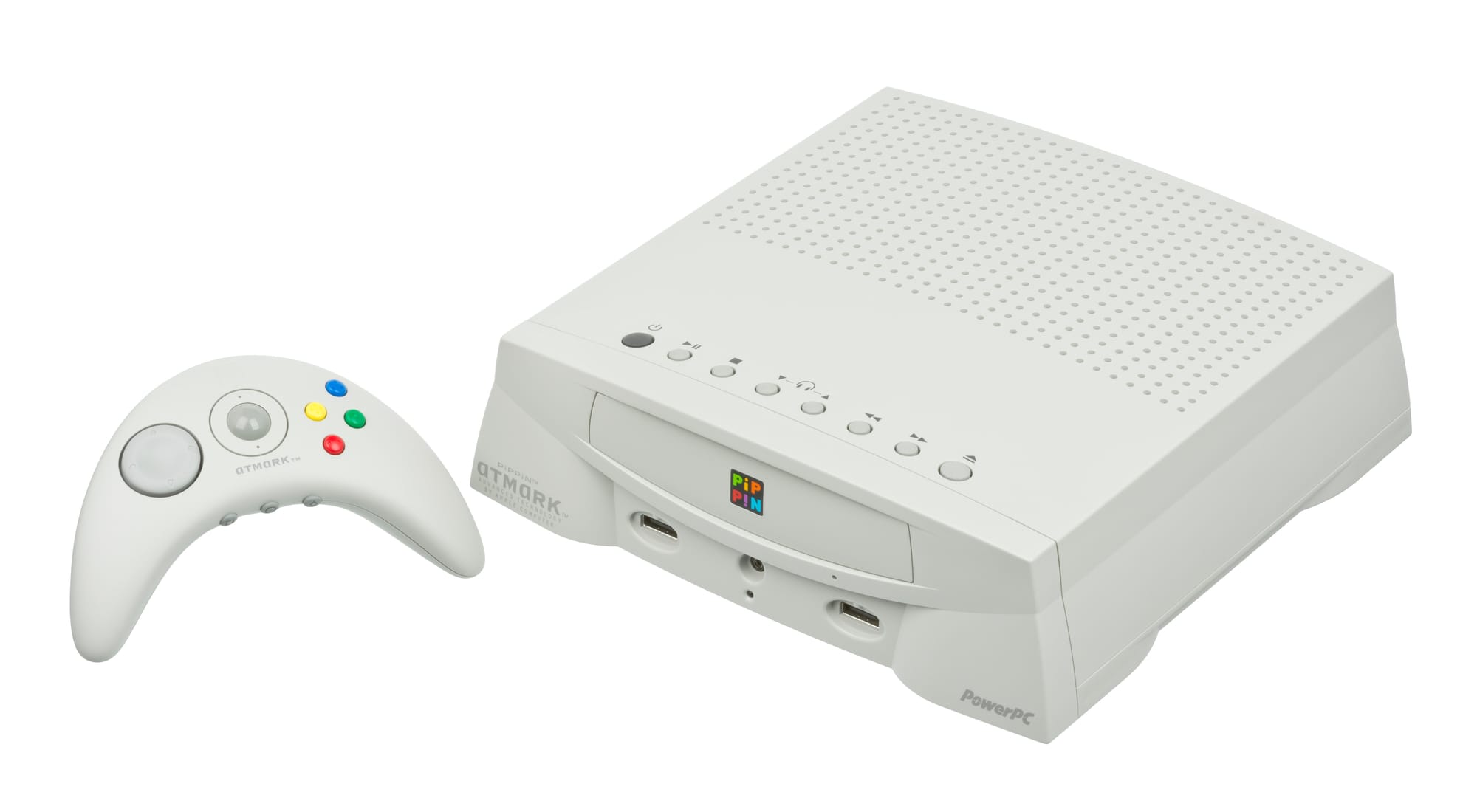With a new Apple TV about to drop, it’s the perfect time to look back at the one and only video game system Apple ever released.
Apple really did have a game console. It was called Pippin, and spoiler: Apple didn’t even manufacture it.
How Pippin happened
In the mid‑’90s, Bandai—big name in games and toys—approached Apple. Apple built a platform called Pippin with Pippin OS and licensed it to Bandai. Bandai handled manufacturing and marketing. The partnership was announced in December 1994; prototypes showed up through 1995. Retail units started rolling out in March 1996.
Apple’s leadership was in flux: John Sculley had exited, Michael Spindler was in, and by the time Pippin actually shipped, Gil Amelio was in the big chair. It was that kind of era.
The hardware (this thing was no joke)
Pippin ran a PowerPC 603—the same chip family you’d find in a lot of Power Macs then. That mattered because Pippin software was developed on Macs. The chip was serious for consoles of the day; you wouldn’t see another platform lean on a PowerPC of that caliber until Nintendo’s GameCube in 2001.
Games came on CD‑ROM—which turned out to be both a highlight and a curse. Video output hit 640×480, which was high‑res by mid‑’90s console standards. It was region‑flexible, with a rear NTSC/PAL switch so one box could play nice with TVs around the world. Many units shipped with a modem built in—you could plug a phone line into Pippin and dial out to the internet.
Input was quirky, and not in a fun way: the controller used a port called AppleJack (yes, really—like the cereal). With the right adapter you could hook up a keyboard and mouse on the same connector.

Why it face‑planted
There were three problems, and they piled up fast.
- The launch price. Japan got Pippin in March 1996 at ¥64,800 (about $610 at the time). The U.S. launch followed at $599. For context, PlayStation was $299. That stings.
It doesn't seem nutty today to buy a game system for $599, especially with the 2025 price hikes by Microsoft, Nintendo, and Sony. In the mid-1990s, I was a store manager for Babbage's (now GameStop), and it was ludicrous for a company to charge that much for a game system. - The software. A lot of the library was edutainment or full‑motion video—interactive CD stuff with real actors and light button‑pressing. That fad had already fizzled. There were only about 45 commercial titles total, with roughly 21 actual games.
Granted, all of this was largely before downloading games online was a thing. But the most successful game systems of the era often had over 1,000+ titles and premier IPs. Nintendo had Mario, Sega had Sonic, and Sony had Lara Croft. Apple? Mr. Potato Head. The struggle was real. - Timing—and the reset. Sales were weak out of the gate. Within about a year, the platform was over. When Steve Jobs returned in 1997, he axed side projects like Pippin (and Newton) and refocused on iMac, which eventually led to iPod and then iPhone.
How many sold?
Not many. You’re looking at around 42,000 units worldwide: roughly 30,000 in Japan and 12,000 in the U.S. By comparison, systems like the PlayStation 2 and Nintendo Switch have hit the 150,000,000 total lifetime sales number. That means the poor Pippin sold a paltry 0.028% of the sales of the heavy hitters.
That would have made the Apple/Bandai partnership a gross sales number of around $25,000,000 combined. I sure hope they split the check at those corporate dinners together.
From flop to collectible
Here’s the twist: when something’s rare, collectors want it. I checked sold listings on eBay and saw that loose Pippin consoles often land in the $500–$800 range, and complete‑in‑box units commonly hit $1,000–$1,500—with extra‑clean sets popping higher. I guess people really do still want what they can't have after all.
Should you buy one?
If you run a museum or you’re building a showpiece collection, sure—it’s a great exhibit. Otherwise, do this: look up Apple Pippin on YouTube, watch some gameplay and edutainment discs, and save your money for the new Apple TV slated for November 12, 2025 release. You’ll get modern games through Apple Arcade and none of the Pippin pain.



Related Posts
Apple’s new web App Store, made simple
Nov 07, 2025
The TRUTH About Apple Intelligence Will Surprise You
Oct 25, 2025
How to Stay Comfortable and Creative During Long Mac Sessions
Oct 23, 2025